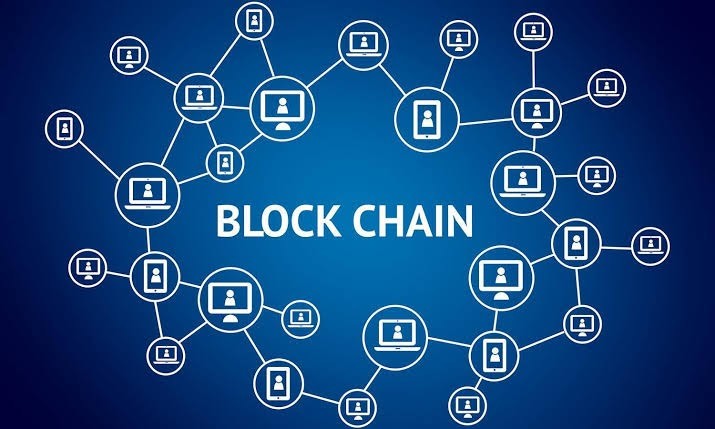The development of blockchain technology is undoubtedly one of the greatest inventions in the digital economy space. First partly developed in 1991 by Stuart Haber and W.Scott Stornetta, the blockchain in layman’s terms is a decentralized, distributed, public ledger that records the source of a digital asset. In broader terms, it is a time-stamped series of immutable data records that are managed by a cluster of computers and not controlled by a single entity. Based on a peer-to-peer (P2P) topology, the blockchain allows data to be stored globally on thousands of servers with each block of data secured to other blocks using cryptographic principles that form chains, hence the name blockchain.

The application of blockchain technology is extensive. The primary use of the technology today is as a distributed ledger for cryptocurrencies and stablecoins. Apart from its use in the crypto world, blockchain technology is applicable in blockchain-based smart contracts, financial services, video game development, and the energy trading sector. Recently, it has been put to use in supply chain management and the e-commerce sector. Research is also ongoing on the possible use of blockchains for voting, in the music world as well as in the development of domain names.
L1 AND L2 NETWORKS OF THE BLOCKCHAIN TECHNOLOGY
Blockchain technology rests on network systems stacked in form of layer solutions. At the moment, there are two common layer solutions, the L1 and L2 layers with developers envisaging that other layers will follow in the near future.
Layer 1 or L1 is the underlying main blockchain architecture. Being the base layer, it is the strongest and most secure but less scalable layer. All base layer systems compete with gold as a proxy for their valuation and success metrics. Their design choices give priority to security over any other consideration. These choices include using proof-of-work as the general mechanism, having a fixed monetary policy, and having its database fully replicated throughout all nodes in the network. These base layer systems are programmable and much more socially scalable on a planetary scale.
On the other hand, Layer 2 (L2) is an overlaying network that lies on top of the underlying blockchain (L1). In the base layer systems, scalability is the big issue, with the systems only able to process paltry 15-20 transactions per second on average. To tackle these challenges, the Layer-2 technology was developed as an “off-chain” solution. Its main purpose is to scale blockchain transaction capacity while retaining the decentralization benefits of a distributed protocol. Layer-2 platforms process data in a way that reduces the burden Layer-1 usually bear. By offloading transactions into L2 platforms, the L1 network can handle bigger transaction loads.
COMPARISON BETWEEN ALGORAND AND OTHER L1/L2 BLOCKCHAINS
Even though the development of the L1 and L2 networks has revolutionized blockchain technology, most blockchains still face significant issues with scalability solutions. These issues include the challenge involved in adding the L1 and L2 networks to existing protocols as well as the problem associated with solving the scalability trilemma. The scalability trilemma is a trade-off that blockchains projects make when deciding on how to optimize their architecture while balancing between three properties — decentralization, security, and scalability. Most of these blockchains such as Bitcoin optimize security and decentralization while compromising on scalability.
Scalability, however, is the need of the hour. In a bid to solve this trilemma, the Algorand blockchain developed by Turing award winner Silvio Micali built a protocol from scratch with these solutions built in. The Algorand blockchain uses a protocol called Pure Proof of Stake (PPoS) built on the Byzantine agreement to solve the trilemma and enable users to build on a platform that they trust.
The Algorand PPoS protocol enables the system to achieve consensus without a central authority and tolerate malicious users as long as a supermajority of the stake is in non-malicious hands. This enables the blockchain to effectively permit thousands of transactions within a short period of time.
Another issue faced by most L1 and L2 blockchains is the problem of implementing decentralization. In a centralized blockchain, a single entity produces the block while every user locally stores all blocks. This approach is obviously efficient, easy to implement, and guarantees fast block finality. However, it requires a super strong trust assumption. The central entity must be trusted not to censor any user or give identical new blocks to all users. Moreover, the central entity can be easily compromised or stopped by a single denial of service attack. In a bid to tackle this challenge, newer blockchains utilized various decentralization methods including proof-of-work decentralization, fixed committee decentralization, and rotating committee decentralization. Still, the decentralization methods could not solve the challenge until Algorand’s true decentralization method was developed.
In Algorand’s truly decentralized blockchain, each new block is generated by a separate, new committee randomly chosen from the set of users. In principle, securely choosing a committee from all users may require large amounts of computation and communication. A novel innovation by Algorand to solve this problem is secret self-selection, namely making the block selection protocol player replaceable. This unique property makes the Algorand protocol extremely secure against adversaries that can successfully attack any user at any point in time.
Through these ingenious innovations, the Algorand blockchain has distinctly exhibited excellence and is currently on the fast track to becoming the Number 1 blockchain on the planet.
This post may contain affiliate links, which means that I may receive a commission if you make a purchase using these links. As an Amazon Associate, I earn from qualifying purchases.

